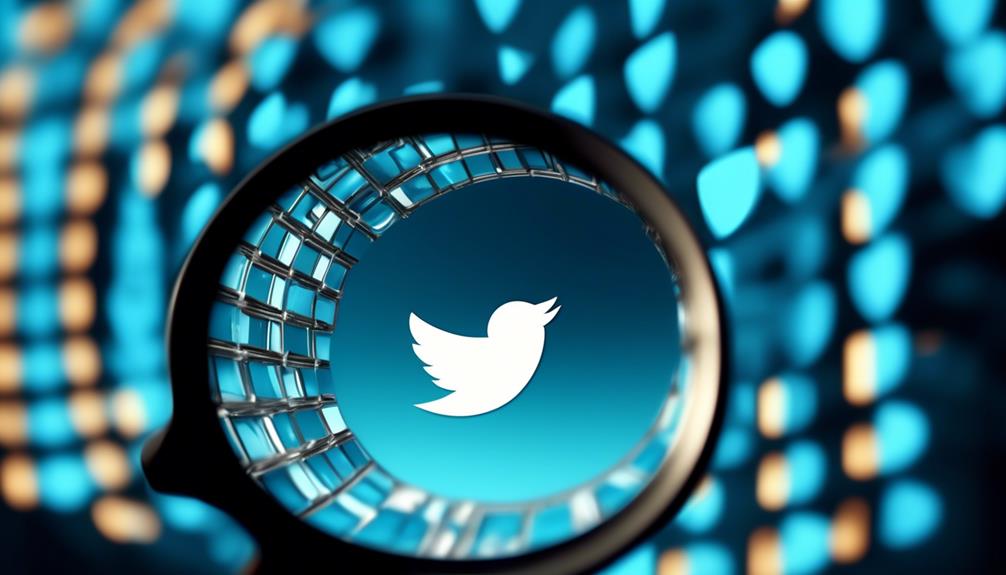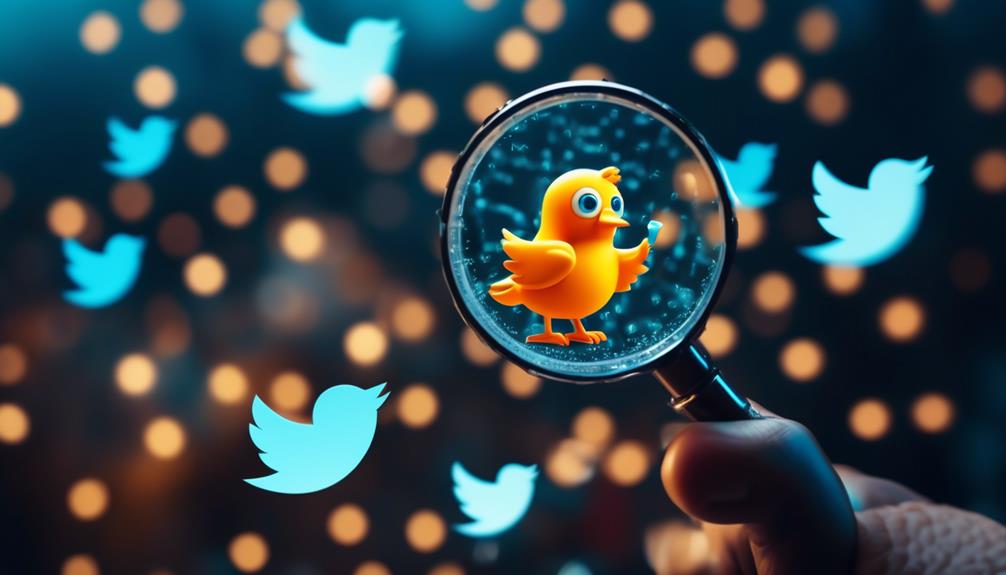
How many likes do my tweets average?
In the grand scheme of life’s mysteries, knowing the average likes your tweets receive might seem as crucial as understanding quantum physics or why cats have that strange obsession with boxes. Yet, here you are, wondering about this digital conundrum.
It’s not just about vanity, it’s about understanding your social media impact, how your content resonates with your followers, and how you can improve your Twitter strategy.
So, how do you calculate the average likes your tweets receive? Well, it’s not as complex as it might initially appear, and the insights you’ll gain from this exercise could potentially transform your Twitter game.
Ready to dive in?
Key Takeaways
- Twitter analytics provides valuable data on follower demographics, interests, locations, and gender split.
- Analyzing engagement metrics, such as likes, shares, comments, and retweets, helps in understanding what resonates with the audience and improving tweet visibility.
- Calculating average likes provides a concrete measure of current tweet performance and helps identify areas for potential improvement.
- Understanding audience demographics, interests, and engagement patterns is crucial for tailoring content and maximizing user engagement.
Understanding Twitter Analytics

Often, you’ll find it crucial to understand Twitter analytics to effectively gauge the impact and reach of your tweets. This robust tool provides a wealth of data, allowing you to delve into your follower demographics and the timing of your tweets.
Analyzing follower demographics isn’t just about knowing the number of followers you have. You need to dig deeper. Twitter analytics lets you see your followers’ interests, locations, and the gender split. This valuable data assists you in crafting content that resonates with your audience, thus boosting engagement.
Now, let’s pivot to exploring tweet timing. You might wonder, when is the best time to tweet? Twitter analytics provides insights into when your followers are most active. By aligning your tweets with these peak times, you heighten the potential for engagement.
Importance of Tweet Engagement
While understanding the timing of your tweets and your follower demographics is vital, it’s equally crucial to grasp the importance of tweet engagement to truly amplify your Twitter strategy. Engagement, in essence, is interaction: likes, shares, comments, retweets. But it’s more than just numbers; it’s about sparking conversations and cultivating relationships with your audience.
Twitter’s engagement algorithms prioritize tweets with higher engagement, pushing them to the top of followers’ feeds and potentially increasing your visibility. Therefore, every like, retweet, or comment you receive is a step towards enhancing your Twitter presence. It’s a data-driven approach; analyzing your engagement metrics can help you understand what resonates with your audience.
Furthermore, influencer collaboration can be a game-changer for your Twitter engagement. By engaging with influencers in your niche, you can leverage their audience and increase your reach. This doesn’t necessarily mean paying for promotions; simple interactions like retweets or mentions can also boost your visibility.
Calculating Your Average Likes

You can compute your average likes by using Twitter analytics and tracking the like count on each of your tweets. This data-focused approach not only provides a concrete measure of your current performance but also identifies areas for potential improvement.
Understanding Twitter Analytics
Diving into Twitter analytics, it’s essential to understand how to calculate your average likes, which serve as a significant metric for gauging user engagement. Start by analysing your Twitter demographics, segmenting your followers based on age, location, or interests. This will give you a clear picture of who your followers are and what they like, allowing you to optimize your profile accordingly.
To calculate average likes, add up the total likes from your tweets over a specific period, and divide by the number of tweets. This will give you an average that represents your performance. Note the peaks and troughs in your analytics. They’re likely tied to the content you’ve posted, the time you’ve posted, or a trending topic.
Be innovative with your data. It’s your roadmap to success.
Improving Tweet Performance
Armed with your average likes data, it’s time to strategize on improving your tweet performance and maximizing user engagement.
To leverage this, focus on:
- Profile Optimization: Ensure your Twitter profile accurately represents your brand. An engaging bio, relevant hashtags, and a striking profile picture can make a big difference.
- Audience Analysis: Understand who your followers are. Use analytics to get a sense of their interests, online times, and engagement patterns.
- Content Quality: Craft tweets that resonate with your audience. Use compelling visuals, strong call-to-actions, and relevant hashtags.
Interpreting Your Twitter Data
Understanding your tweet analytics is key to interpreting your Twitter data.
You’ll need to consider the specific factors that influence the number of likes your tweets receive.
With a data-driven approach, you can make precise interpretations and enhance your Twitter engagement.
Understanding Your Tweet Analytics
To make the most out of your Twitter data, it’s crucial to learn how to interpret your tweet analytics effectively. This step involves delving into Tweet metrics analysis and mastering audience targeting techniques.
Your Tweet Reach: This metric shows how far your content has traveled, giving you a sense of your brand’s global influence.
Audience Engagement: This measures likes, shares, and comments, telling you what content resonates most with your followers.
Follower Growth: Tracking this shows the success of your audience targeting techniques.
Analyzing these metrics does more than quantify your Twitter activity. It reveals patterns, highlights successes, and identifies areas for improvement.
Influencing Factors on Likes
When it comes to increasing likes on your tweets, several critical factors can significantly influence your results. The ‘Engagement Bots Effects’ can be a game-changer. These bots, when used strategically, can drive engagement rates up. However, you must be cautious. Inauthentic interactions can harm your brand’s integrity and even lead to penalties from Twitter itself.
The power of ‘Celebrity Interactions’ is also undeniable. A retweet or a mention from a celebrity can escalate your tweet’s visibility exponentially, leading to a surge in likes. However, this requires a compelling tweet to catch a celebrity’s attention. Analyse your successful tweets for patterns and harness these insights for future posts.
Strategies to Boost Likes

Harnessing the power of social media metrics, you can significantly enhance your Twitter engagement by adopting certain strategies to boost likes. Key among these strategies are Profile Optimization and Audience Interaction.
Profile Optimization is about making your Twitter profile as appealing and engaging as possible. This includes using a clear profile picture, having a catchy bio, and making sure your tweets are relevant to your profile’s theme. A well-optimized profile attracts more followers and subsequently more likes.
Audience interaction is another crucial strategy. Engaging with your followers by replying to their comments, retweeting, and liking their posts fosters a sense of community and encourages them to interact with your posts as well.
To evoke an emotional response, consider the following:
- Use compelling visuals: Images, gifs, and videos are proven to attract more likes.
- Leverage trending hashtags: This increases the visibility of your tweets.
- Post during peak times: When your audience is most active, you’re likely to get more likes.
Content Creation for Engagement
Crafting engaging content plays a pivotal role in boosting your Twitter likes. It’s not just about posting frequently, but rather about delivering value with each tweet.
The power of visual content benefits can’t be underestimated. Tweets with images receive 150% more retweets than those without. It’s about harnessing the power of visuals to captivate your audience, tell a story, and spark conversations.
Understanding your target audience is also critical. Conduct a target audience analysis, digging into their interests, their language, and the type of content they engage with. Data shows that tweets that resonate with the audience’s interests can increase likes by up to 75%.
Personalize your tweets, make them relatable, and you’ll see a surge in engagement.

To effectively drive engagement on Twitter, you need to master the art of using hashtags. Tweets with at least one hashtag can increase engagement by 100%. Hashtag Research is a critical step in this process. This involves identifying popular, relevant hashtags within your industry or niche.
Brand specific hashtags, on the other hand, are unique to your business. They can be used to generate awareness and develop a community around your brand. They can be your brand name, tagline, or a specific campaign name.
Here are three innovative ways to utilize hashtags effectively:
- Use a mix of popular and niche-specific hashtags to reach a wider audience while also targeting those with specific interests.
- Create and promote your own brand-specific hashtag. This can help to create a buzz around your brand and allows you to easily find and engage with your audience.
- Use hashtags in Twitter chats to engage with other users in real time. This can boost your visibility and establish you as a thought leader in your industry.
Scheduling Tweets for Maximum Impact
While mastering hashtags can boost your Twitter engagement, it’s equally crucial to strategically schedule your tweets for maximum impact. This is where the ‘Peak Timing Strategy’ comes into play. It’s all about timing your tweets when your audience is most active.
Analyzing your audience’s behavior can provide valuable insights. Are they night owls or early birds? Do they check Twitter during lunch breaks or after dinner? Answers to these questions will help you in audience targeting.
| Peak Time | Engagement Rate |
|---|---|
| Early Morning | Low |
| Mid-Morning | Medium |
| Lunch Time | High |
| Evening | Medium |
| Late Night | Low |
The table above illustrates a generic pattern of user engagement on Twitter. However, it’s crucial to remember that this can vary based on your specific audience demographic.

